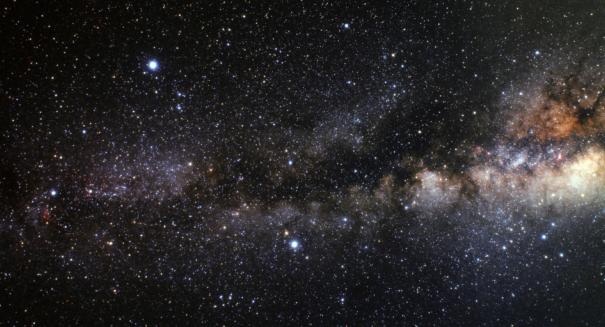Astronomers create galactic cloud map, search for ‘missing’ source of gamma rays
In the Milky Way, stars are produced at the rate of about one per year, on average.

|
According to a September 10 news release from the University of New South Wales (UNSW) in Australia, a UNSW-led team of astronomers has embarked on an experiment to map the location of our galaxy’s giant gas clouds, where new stars are formed.
By using the 22-meter Mopra millimeter wave telescope in Coonabarabran, New South Wales – which barely escaped ruin in a recent bushfire – the team of researchers identifies the galactic clouds of molecular gas, up to 100 light years across, by examining the carbon monoxide they contain. Although the adjoining workshop, office, and accommodation wing were destroyed in the bushfire, the telescope control room survived because it was surrounded by brick.
“On Earth, carbon monoxide is poisonous – a silent killer. But in space, it is the second most abundant molecule and the easiest to see,” said research team leader Professor Michael Burton, of the UNSW School of Physics. “One of the largest unresolved mysteries in galactic astronomy is how these giant, diffuse clouds form in the interstellar medium. This process plays a key role in the cosmic cycle of birth and death of stars.”
The findings of the first stage of the research – which covers a region of the sky roughly the size of four full moons – appear in the journal Publications of the Astronomical Society of Australia.
In addition, the international team of scientists is searching for “dark” galactic gas clouds – invisible clouds that contain minute amounts of carbon monoxide. The scientists believe that these clouds are primarily composed of molecular hydrogen, which is too cold to detect. The team will use telescopes in Antarctica and Chile to hunt for these dark clouds, based on the existence of carbon atoms, rather than carbon molecules, in the clouds.
“Taken together, these three surveys will provide us with a picture of the distribution and movement of gas clouds in our galaxy,” said Professor Burton.
If the researchers do discover dark clouds, they could be the “missing” source of gamma rays, which are produced when high-energy cosmic rays interact with the nuclei of gas atoms or molecules they bump into when drifting through space.
“The source of more than 30 per cent of gamma rays remains unidentified – another big mystery our research could throw light on,” said Professor Burton.
In the Milky Way, stars are produced at the rate of about one per year, on average. It is the stars that explode and die that reload the gas clouds, as well as moving and mixing up the gas.